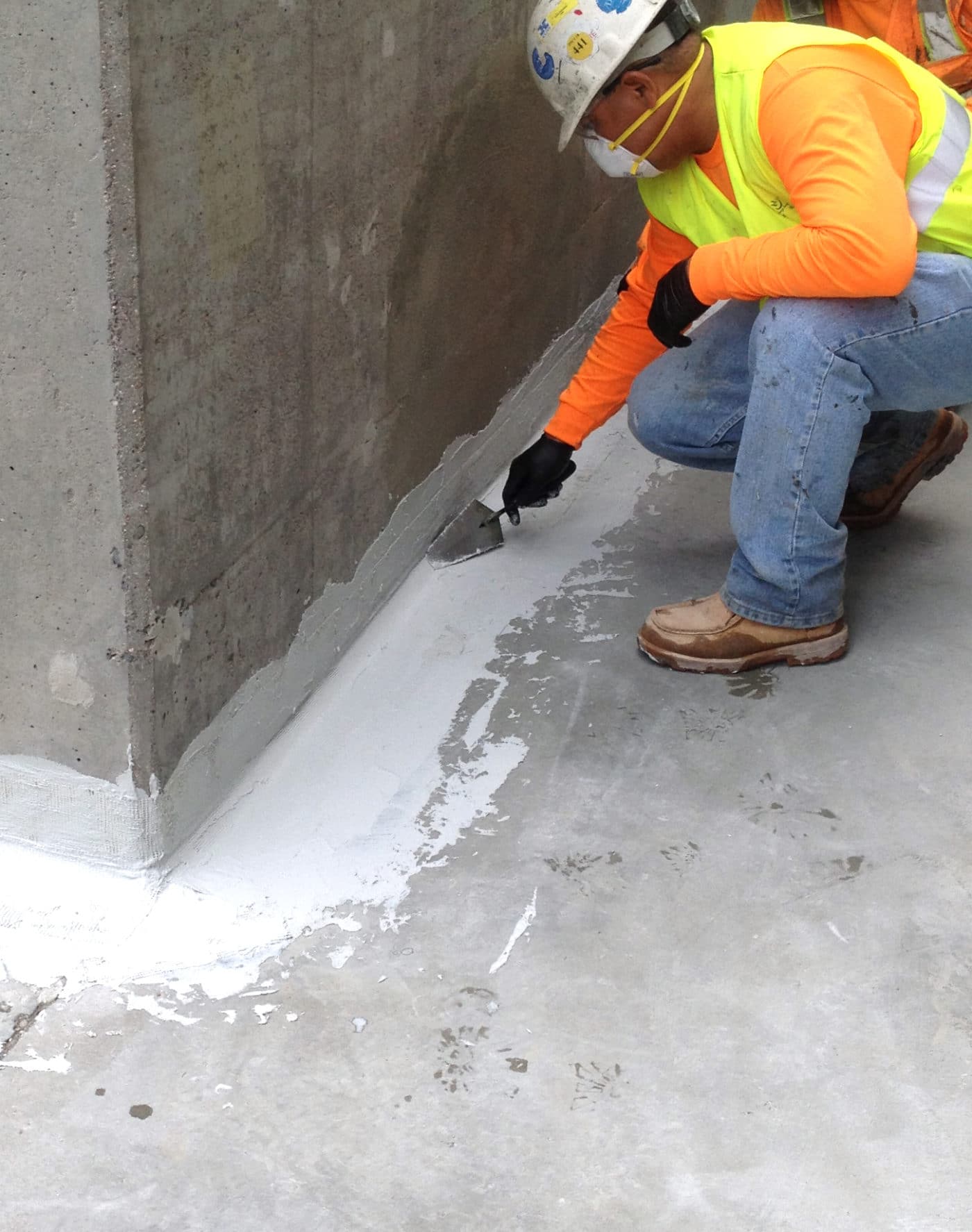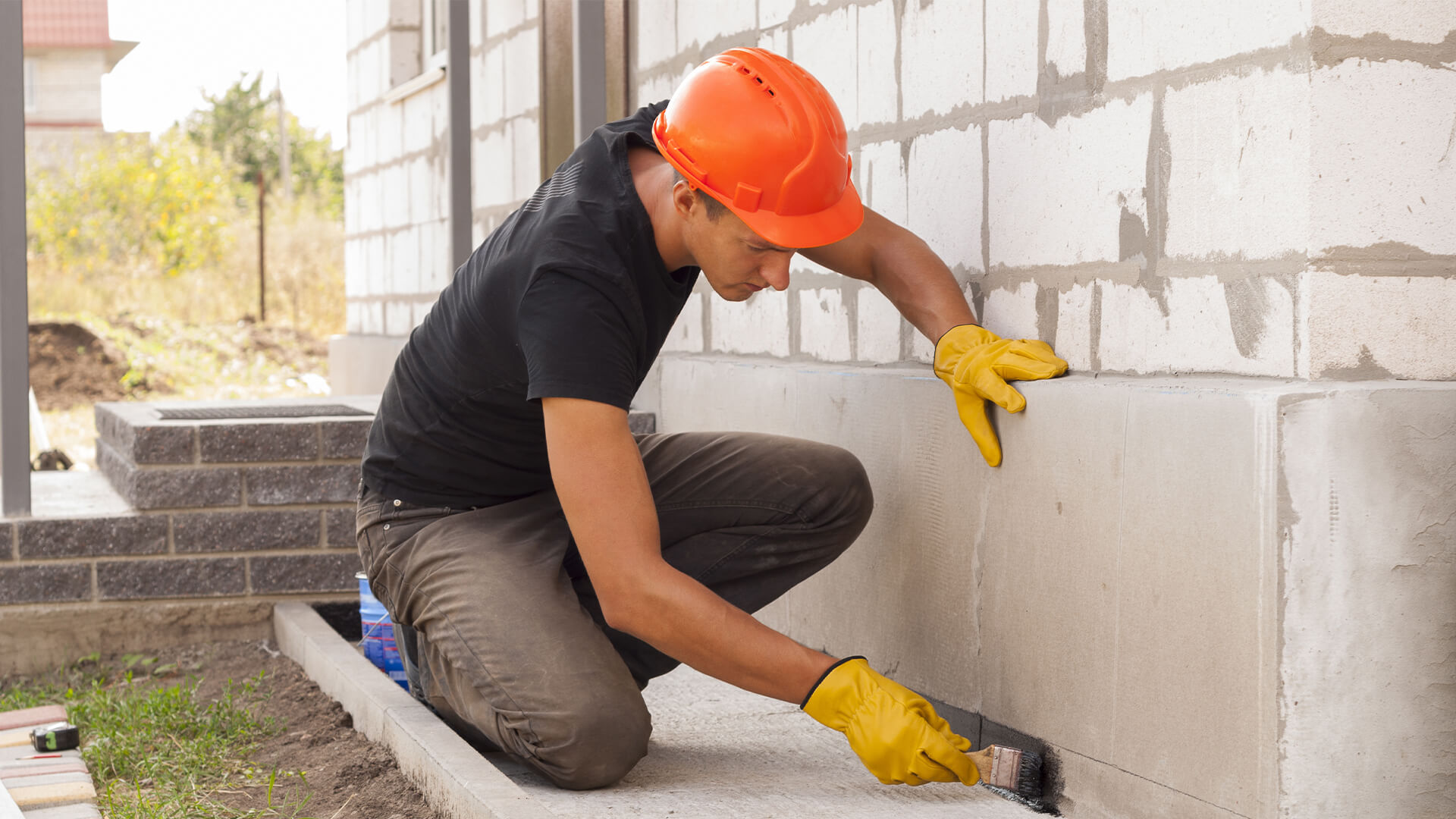How Waterproofing Works: A Detailed Consider Methods and Technologies
Waterproofing is important for protecting frameworks from moisture-related damage. It involves numerous strategies and modern technologies that develop obstacles versus water invasion. Typical approaches, such as compressed clay, coexist with modern-day technologies like liquid-applied membranes. Understanding the subtleties of these strategies is crucial for reliable application. However, the efficiency of any kind of waterproofing remedy pivots not just on the methods used yet likewise on continuous maintenance and inspection. What are the key elements that influence long-lasting performance?
Recognizing the Essentials of Waterproofing
Waterproofing is a crucial procedure that protects frameworks from water breach, which can lead to considerable damages in time. This method entails the application of numerous materials and techniques designed to produce an obstacle against dampness. The key objective is to prevent water from permeating surface areas, which can trigger degeneration, mold and mildew growth, and structural instability.Various aspects affect the selection of waterproofing approach, consisting of the kind of structure, its place, and ecological conditions. Understanding the physics of water activity and the homes of different materials is important in choosing an efficient waterproofing solution.Effective waterproofing not only safeguards structures yet also boosts their longevity and integrity. Usually, it is integrated right into the layout stage of building and construction to guarantee thorough protection. As awareness of water-related concerns expands, the relevance of understanding waterproofing fundamentals comes to be progressively clear to engineers, building contractors, and residential or commercial property owners alike.
Standard Waterproofing Methods
Typical waterproofing approaches have been made use of for centuries, counting on tried and true strategies and products to protect structures from water damages. One of the earliest methods involves using clay, which, when compacted, develops an all-natural barrier versus moisture. Furthermore, bitumen, a sticky, black product originated from petroleum, has been utilized for its water-resistant buildings, commonly related to roofs and foundations.Another strategy entails the application of lime-based plasters, which give a breathable layer that enables moisture to escape while stopping water access. Thatch roofing, a traditional technique still seen in some cultures, provides outstanding waterproofing due to its tightly packed straw layers.Moreover, the usage of stone and brick has actually projected, as these products are naturally resistant to water when correctly mounted. On the whole, conventional waterproofing methods emphasize the significance of choosing suitable materials and building techniques to improve resilience versus water intrusion.
Modern Waterproofing Technologies
Advancements in modern-day waterproofing innovations have reinvented the way frameworks are protected from water damages. Ingenious techniques such as liquid-applied membranes and innovative sealers have boosted the efficiency and adaptability of waterproofing options. These technologies enable smooth application, minimizing the risk of leakages and guaranteeing thorough coverage over intricate surfaces.Moreover, the assimilation of smart technologies, such as wetness sensing units and automated tracking systems, makes it possible for real-time evaluation of waterproofing performance. This proactive method helps with prompt maintenance and lowers long-term repair work costs.Additionally, innovations in spray-applied coverings use fast application and superb adhesion, adapting to numerous substratums while supplying durable defense. Techniques like polymer-modified systems even more improve adaptability and resilience, making them ideal for varied settings. In general, contemporary waterproofing technologies not just reduce water invasion but additionally contribute to the longevity and sustainability of frameworks, marking a substantial change in the industry.
Products Made Use Of in Waterproofing
The efficiency of waterproofing remedies heavily relies upon the products used in their application. Different products are employed to create barriers versus water access, each with one-of-a-kind properties fit for different settings. Typically used materials consist of membranes, coverings, and sealants.Liquid-applied membrane layers, frequently made from polyurethane or acrylic, create a seamless barrier that adapts to intricate surface areas. Sheet membranes, commonly constructed from rubber external waterproofing or polycarbonate, offer longevity and are suitable for bigger areas. Furthermore, cementitious waterproofing materials, composed of cementitious substances, give superb bond and flexibility.Sealants made from silicone or polyurethane are important for joints and joints, making sure complete security. In addition, sophisticated products, such as geo-composite membrane layers, integrate numerous functions, improving efficiency. On the whole, the choice of waterproofing products is crucial in accomplishing long-lasting and reliable water resistance, customized to certain job demands and environmental conditions.
Usual Applications of Waterproofing
Waterproofing plays a vital function in various fields, ensuring the long life and stability of structures. Usual applications include household services that secure homes, business facilities that safeguards businesses, and industrial settings that need robust defense versus moisture. Understanding these applications highlights the relevance of waterproofing in preserving both security and performance throughout different settings.
Residential Waterproofing Solutions
Numerous property owners face challenges with moisture invasion, making reliable property waterproofing services crucial. Different methods exist to address this concern, consisting of exterior and interior waterproofing systems. Inside options typically involve the application of sealants and layers to cellar walls, which assist protect against water infiltration. Outside techniques normally include the installment of drain systems and water-proof membranes that draw away water away from the foundation.Additionally, home owners might think about sump pumps to eliminate water buildup and dehumidifiers to control moisture levels. Proper grading and using rain gutters additionally play a vital function in managing water flow around the home. By executing these methods, house owners can substantially decrease the danger of water damage and mold and mildew growth, making sure a completely dry and secure living atmosphere.

Industrial Infrastructure Security
Effective waterproofing remedies play a vital role in the defense of commercial facilities. Sump pump installation & replacement Omaha. These methods are essential for protecting structures, parking frameworks, and bridges from water damage, which can compromise architectural integrity and result in expensive repairs. Typical applications consist of the installment of membranes, coatings, and sealants try this out that develop barriers against dampness infiltration. Areas such as basements, roofing systems, and exterior wall surfaces are typically prioritized to ensure longevity and durability. Additionally, waterproofing systems can improve power efficiency by preventing water-related issues that might bring about mold development and degeneration. By applying basement drainage system durable waterproofing procedures, homeowner can protect their investments and preserve functional performance, ultimately contributing to the total sustainability of commercial facilities
Industrial Applications Introduction
While various fields deal with unique difficulties, the requirement for trusted waterproofing solutions stays a consistent in commercial applications. Industries such as production, building and construction, and power typically encounter environments where moisture exposure can threaten structural integrity and operational efficiency. In producing centers, waterproofing is important for securing equipment and products from water damages. In building, it safeguards foundations and cellars against groundwater infiltration. The energy industry counts on waterproofing for the defense of equipment in hydroelectric plants and offshore structures. Additionally, food processing industries utilize waterproofing to assure health and conformity with security requirements. Overall, efficient waterproofing solutions are important for enhancing longevity, safety, and performance throughout numerous industrial settings.
Upkeep and Durability of Waterproofing Solutions
Although waterproofing options are designed to offer long-term security versus moisture invasion, normal maintenance is vital to ensure their efficiency and durability - Sump pump discharge drainage Omaha. Regular evaluations play a significant duty in identifying prospective issues such as cracks, peeling off, or signs of water damages. Dealing with these troubles promptly can protect against further damage and expensive repairs.Additionally, cleaning the surface area of waterproofed areas helps eliminate dust and debris that can endanger the stability of the waterproofing obstacle. It's likewise a good idea to reapply safety finishes or sealers as recommended by makers to preserve perfect performance. Environmental variables, such as UV direct exposure and extreme climate condition, can influence the life expectancy of waterproofing products, making routine evaluation crucial
Often Asked Questions
Can Waterproofing Be Applied in Cold Weather?
The question of using waterproofing in winter raises worries regarding adhesion and curing. Many items might not carry out at their best in reduced temperature levels, demanding mindful selection and factor to consider of details guidelines for reliable application.
How Much Time Does Waterproofing Generally Last?
The period of waterproofing efficiency differs based upon materials and environmental aspects. Usually, it can last from 5 to 10 years, however regular maintenance and evaluations are important to guarantee peak performance and durability.
Is DIY Waterproofing Effective and Safe?
The effectiveness and safety and security of DIY waterproofing depend upon numerous factors, including worldly high quality and application method. While some individuals achieve sufficient outcomes, others might encounter concerns that endanger long-lasting security and architectural integrity.
What Are the Signs of Failing Waterproofing?
Indicators of stopping working waterproofing include visible water spots, peeling paint, mold and mildew development, musty smells, and dampness in walls or ceilings - Sump pump discharge drainage Omaha. These indicators recommend jeopardized barriers, necessitating prompt evaluation and potential remediation to avoid more damages
How Do I Select the Right Waterproofing Professional?
